Archive for category Past issues
Obituary:Â Â Mohinder Mohan Bahl (1938 – 2017)
Posted by admin in April 2017, Past issues on April 2, 2017
A Respected Doctor in Internal Medicine
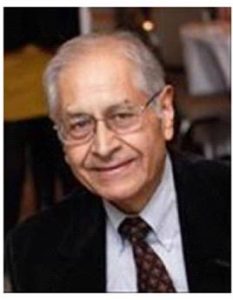 Dr. Mohinder Mohan Bahl, a longtime resident of Pittsburgh, passed away on February 3rd, 2017. The cause of his death was complications following a stroke in his long battle with heart problems.
Dr. Mohinder Mohan Bahl, a longtime resident of Pittsburgh, passed away on February 3rd, 2017. The cause of his death was complications following a stroke in his long battle with heart problems.
He worked at the Shadyside Hospital and the East Suburban Hospital in Monroeville (now Forbes), while also mentoring many young doctors. His specialty was internal medicine. Loved by his patients and respected by his peers, he was recognized by the Allegheny County Medical Society for his years of distinguished service.
Bahl was born in 1938 in Nairobi, Kenya.  He was the third among his five other siblings. He earned his medical degree in India on a scholarship. He came to the US in 1972, pursuing his American dream. He did his residency in internal medicine in Pittsburgh and other places in the US. In 1975 he opened his medical practice in Penn Hills where he served his community for over thirty-five years with diligence, dedication, and kind disposition.
While working as a doctor in Nairobi, in 1964 he married Saroj. The Bahls with their three young children came to the US in 1972. In the early days of Indians coming to live in Pittsburgh, Mohinder Bahl was active in the Indian community. He was a founding member of the Hindu Jain temple. He gave his full support to Saroj’s dedicated efforts to add the Indian Nationality Room in the University of Pittsburgh’s Cathedral of Learning. The Indian Nationality Room, against many odds, was dedicated in 2000. He supported many charitable organizations locally and abroad including the Red Cross and Ekal Vidyalaya, which builds schools in rural, interior India.
Mohinder Bahl was always dignified and gracious with people. He had a good sense of humor that his children imbibed from him. He liked gardening, current events, discussing politics, and he avidly collected coins.
He leaves behind Saroj, his dear wife of fifty-two years of marriage; his three sons Ashish, Monish and Sachin and their wives; his only daughter Mala and her husband; and his ten grandchildren, whom he adored. His brother Vijay Bahl lives in Pittsburgh.
His cremation ceremonies followed Vedic rites at the Beinhauer Funeral Home on Sunday, February 5.
—  By Nita Wadhwani, Presto, PAÂ
Ramalingam Sarma: Celebrating 100 Years
Posted by admin in April 2017, Past issues on April 2, 2017
Translated Valmiki’s Sundarakaandam into English in his 80s
By Jayashree Phanse
e-mail: jphanse560@hotmail.com
February 12, 2017. Venue: A modestly decorated Banquet Hall at the Cascade Marriott in Dallas for 150 people. With children running around, adults were chatting, munching on hot samosas and pakodas and sipping Lassi or Chai. We were awaiting the arrival of Shri Ramalingam Sarma, our hero, to celebrate his 100th birthday. Ramalingam Mama — mama is an endearing term for maternal uncle in Indian languages — alert as ever, arrives in a wheelchair with his sons, daughters, and grandkids in tow. He lives in Dallas with his son Arvind. People greet him with bouquets and pranams. Mama calls out one of the guests, “Govindraj, so you made it. Look, I am wearing the shirt you bought for me!!â€
As Chaitanya, Mama’s grandson, gets ready to welcome everyone, Mama interrupts, “It is just another birthday and it happens to be 100. I welcome you all for my 100th birthday,†and blesses in Sanskrit: “Jeevet sharadah shatam†— ‘May you all live for 100 autumns.’ He continues with a smile, “And invite me for your celebrations.â€
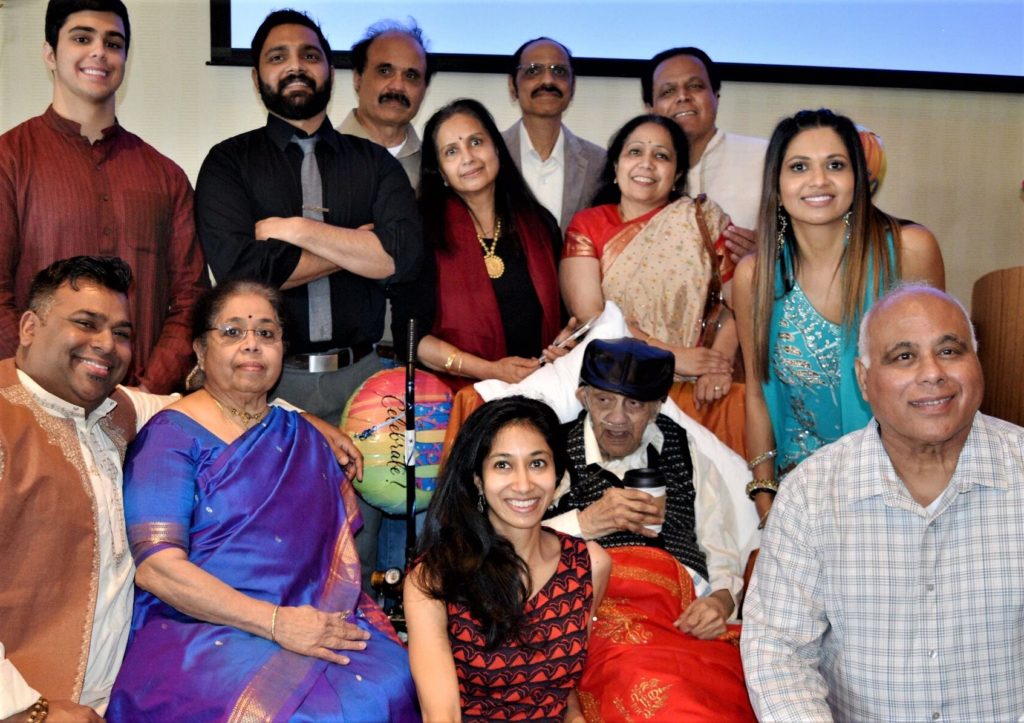
Geetha Manian, Shri Sarma’s daughter, is in the blue sari.
Mama has a Pittsburgh connection. With his wife Shakuntala (now deceased) he visited the US in 1984 for his son Arvind’s wedding. After retirement, they migrated to the US in 1988 since all their children were here. He lived in Pittsburgh with his daughter Geetha Manian until 2005 to help her raise her son as a single mom. Geetha still lives in Pittsburgh. Many here remember him as an energetic, wiry, alert man.
Mama had studied basic Sanskrit during his school and college days. This was eight decades ago. “Like many
youngsters, in my youth I was not interested in understanding Sanskrit chanting done during routine worships,†he says. After he turned 80, he started refreshing himself in the language’s arcane grammar with books and help from the Internet.
In his boyhood, he had listened to his mother reciting in Tamil Sundarakaandam, a section in Ramayanam. Later he read it in Tamil. Valmiki’s Sanskrit original has 2800 slokas (verses) in 68 sargas (chapters). He wanted an English translation to be useful for today’s youngsters with these features: It should go beyond the simple translation. He set himself for this big task while he was in his 80s. He wanted to present each sloka in the Devanagari script as in the Valmiki’s original with these features added: Classical Sanskrit slokas are with complex Sandhi rules (coalescence of vowels and consonants) and meters peculiar to the language. So, each sloka is simplified in the Devanagari script by breaking the coalesced phrases into simpler words with meanings for easy reading and understanding. Transliterating this into the Roman script, Sarma gives the translation of the verse in English.
For doing this, Mama, while in his 80s, learned computer skills and the necessary software for transliteration from the Roman to Devanagari scripts.
This enormous task took eleven years for completion, with Gargi (Mama’s youngest daughter) and her husband
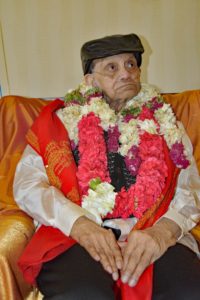
Mama Shri Ramalingam Sarma at his Centenary Celebrations.
Chandrakant helping him in the last two years. Sujatha Awathi, a Sanskrit professor in Pune, proofread the work and helped in getting the work printed in two volumes of more than 600 pages each. Two-hundred-and-fifty copies were printed in Pune, and several were donated to various universities.
Many assembled in the centenary gala recited poems and prayers, and sought Mama’s blessings by doing pranams to the centenarian. Mama’s sons, daughters, and grandchildren put together a slide show with occasional commentaries by Mama himself! The guests were given a coffee mug with the famous Rig Veda phrase Aano bhadraah kratavo yantu vishvatah printed. The phrase literally means “Let noble thoughts come to us from all directions.†Incidentally, this is the first Sanskrit lesson I learned from my father when I was less than 10 years old.
In his 100th year, Mama sent individual and personal “Thank you†emails using his i-Pad for those present at his 100th birthday bash.
Even at 100, Mama is fully independent, with the need for occasional oxygen supplements. He is mentally alert, and his memory is as sharp as it can be. Evidently, the good genes he inherited from his parents have played a big part. However, we also need to recognize the other lifestyle choices he made: All through the one hundred years of his life, Mama has been disciplined and simple in his personal life, even as he lived through several difficult transitions; fastidious and frugal in his eating habits; regular in his exercise routines; and attentive to his health. He is a good role model for us on this. We wish him well.   ♣
Harish Saluja’s Miniature Paintings Exhibited
Posted by admin in April 2017, Past issues on April 2, 2017
By K. S. Venkataraman
Taking inspiration from Rajasthan’s rich tradition in miniature paintings, our multi-faceted Harish Saluja used his palette and paint brushes to create bright paintings using water color, acrylics and other materials. His medium for these miniature paintings are 3†x 5†index cards, with abstract and Asian motifs.
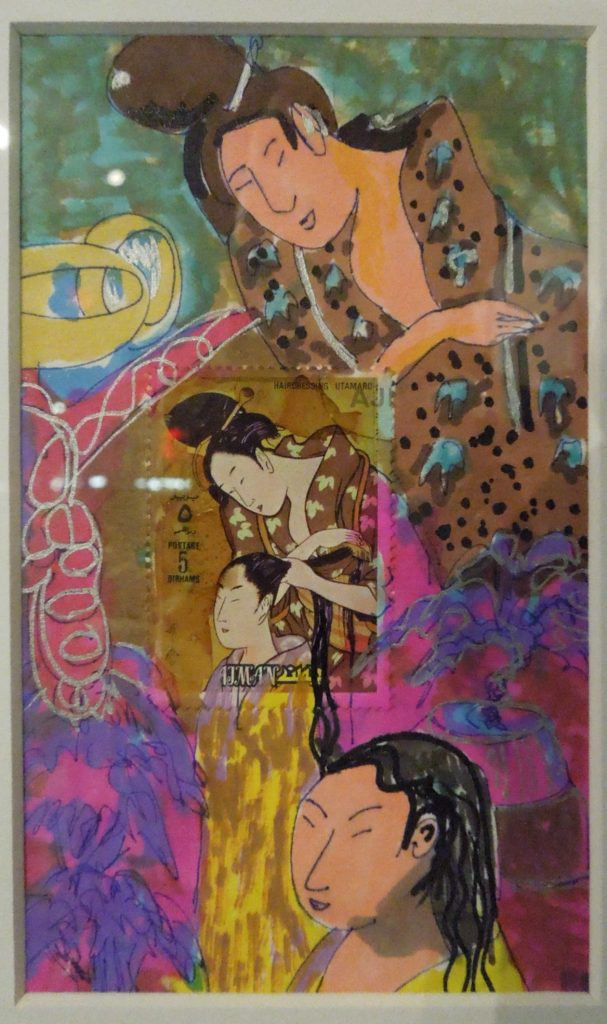
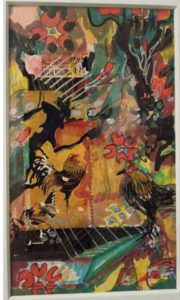 Over 100 paintings were on display during February-March in a gallery on Liberty Avenue. Arts aficionados, Saluja’s friends and well-wishers, including Pittsburgh Mayor Bill Peduto (see below), were there on the opening day to hear Saluja sharing his inspiration for these paintings.
Over 100 paintings were on display during February-March in a gallery on Liberty Avenue. Arts aficionados, Saluja’s friends and well-wishers, including Pittsburgh Mayor Bill Peduto (see below), were there on the opening day to hear Saluja sharing his inspiration for these paintings.
The adjacent picture measuring 3†x 5†is the actual size of the paintings displayed.
Harish says he had no formal training in arts schools; or for that matter in music or film making, for which also he is known. His talents are natural, like the fragrance of flowers in the wild.  ♣
Obituary: Sarjit Singh (Nov 1, 1939 to Dec 22, 2016)
Posted by admin in April 2017, Past issues on April 2, 2017
Well-liked Neurologist, Founding Member of AAPI and the Pittsburgh Sikh Gurudwara
Dr. Sarjit Singh, a long-time resident of Weirton, WV, passed away peacefully at his home on Thursday, December 22, 2016. He was 77. The Greater Pittsburgh Area has lost one of its outstanding members.
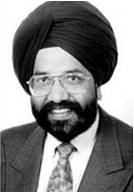 Born in Tanda, Hoshiarpur district in Punjab, India, Dr. Singh obtained his medical degree from Glancy Medical College, Amritsar, Punjab. He came to the United States in 1969 with his wife, Dr. Ranjeet Singh, now a retired pathologist. He trained in neurology in Buffalo, New York, and completed a clinical fellowship at Harvard University.  In 1975, the Singhs settled down in Weirton.
Born in Tanda, Hoshiarpur district in Punjab, India, Dr. Singh obtained his medical degree from Glancy Medical College, Amritsar, Punjab. He came to the United States in 1969 with his wife, Dr. Ranjeet Singh, now a retired pathologist. He trained in neurology in Buffalo, New York, and completed a clinical fellowship at Harvard University.  In 1975, the Singhs settled down in Weirton.
Dr. Singh was an assistant clinical professor of neurology at the University of Pittsburgh Medical Center and the Medical College of Pennsylvania. Dr. Singh actively practiced neurology up to the time of his death. He authored numerous research papers in neurology. His patients liked him for his clinical skills, compassion, personal attention, and cheerful disposition.
Dr. Singh was a founding member of AAPI, the American Association of Physicians of Indian Origin, where he also served as president in 1991. During his tenure, Dr. Singh, with his colleagues, established three charitable medical dispensaries in India, serving thousands of needy patients. He was also involved in forming the Amritsar Medical and Dental Alumni Association of North America.
In 1992 Dr. Singh was appointed to the West Virginia Board of Medicine which licenses and governs doctors throughout the state. He later served as the Board’s president in 1998. In 1991, the Governor of West Virginia recognized Dr. Singh as one of the Most Distinguished West Virginians, one of the state’s highest honors. He also served as Chairman of the Board of Trustees of the Urban Health Alliance, representing ethnic/minority physicians to aid the less fortunate in their healthcare needs.
Dr. Singh was one of the founding members of Tri-State Sikh Gurudwara in Monroeville PA, completed in 1985, for serving the spiritual and cultural needs of Sikhs in the Tri-State area.
He was also active in the Democratic Party at the state and national level, and was appointed to the Board of Trustees of the National Democratic Committee in 1992.  He was active in the Weirton Rotary Club, donating generously for the scholarship funds, and hosting many exchange students. The City of Weirton inducted him into the Weirton Hall of Fame.
Singh was an avid tennis player and loved playing golf with his friends and was a member of the Williams Country Club in Weirton.
He had a great sense of humor that came out even when he was seriously ill. He advised and rewarded people who quit smoking. I was one of the many recipients of $100 from him when I quit smoking.
Dr. Singh is survived by his wife, Ranjeet; his son Satbir, a urologist and his daughter-in-law, Shalu, a neurologist; and grandchildren, Sheraj and Simreen.
Private cremation services following the Sikh rites were held for Dr. Singh on Saturday, December 24, 2016 in Dover, Ohio. In the memorial service held later at the Sikh Gurudwara in Monroeville on January 7, 2017, a large number of his family members, friends and associates from near and far reminisced about their association with Dr. Singh. The common themes in the gathering were his determination, vision, kindness, caring, readiness to help others, and his sense of humor.
– By Juginder Luthra, Weriton, WV ♣
Want to know about NRIs, PIOs, OCIs ?
Posted by admin in April 2017 on April 2, 2017
By Kris Gopal
E-mail: Â gutcut@comcast.net
Editor’s Note: Readers of this magazine are familiar with the acronyms and abbreviations relating to Indian citizens under different visa/citizenship categories. The most important of these acronyms are NRIs (Non-Resident Indians), POI cards (People of Indian Origin cards), and OCI cards (Overseas Citizens of India cards). Other terms are Green Cards, Naturalized Citizens and Natural Citizens. Indian-Americans is a term often used in the US relevant only in a social context, with no legal validity.
For a variety of reasons, many naturalized US citizens in the US carry either the PIO card or the OCI card the obvious one being the visa-free entry into India any time. There are other important differences between the PIO cards and OCI cards that pertain to driving privileges, privileges and restrictions to work in India and ownership of properties, bank accounts, money transfers, inheritance… …
These are important legal and citizenship terms having far-reaching implications. So, take the information in the article in our website as a starting point to get a general idea. You need to do further search to get the most current and precise definition of these terms. Many websites are available to guide you in this search.
Kris Gopal, a long-time resident of our area has figured this all out for your benefit in the simple, easily readable and understandable article below.Â
1. NRI
2. PIO
- The person used to be an Indian citizen (held an Indian passport)
- The person or at least one parent, grandparent,or great-grandparent who is/was born in and permanently resided in India
- The person is married to an Indian citizen or an existing PIO covered under (1) and (2) above
- Anyone who was ever a citizen of Pakistan, Bangladesh, Sri Lanka, Bhutan, Afghanistan, Iran, China or Nepal
- Anyone whose parents or grandparents were citizens of Pakistan, Bangladesh, Sri Lanka, Bhutan, Afghanistan, Iran, China or Nepal
- A multiple entry, multi –purpose visa for visiting India. PIO Card itself is treated as a Visa
- No separate Student/Employment/Business visa will be required for admission in colleges/intuitions or taking up employment, business, etc in India
- Special counters for speedy immigration clearance at designated Immigration check posts
- Exemption from registration with local police authorities for continuous stay up to 180 days in India
- Exemption from registration with local police authorities for miners up to 16 years of age
- Parity with Non-resident Indians (NRIs) in economic, financial and educations fields except for acquisition of agricultural land or plantations
- PIO Card can be used as identity proof for applying for a (I) PAN card, (II) driving license and (III) opening of Ban account in India, if the PIO card holder resides in India.
- You may not purchase agricultural land or farm houses
- You may not vote
- You may not hold a government job
- You may not be elected to a political position
- You may not travel to restricted areas without permission
- You may not undertake any missionary work, mountaineering and research work, without the prior permission of the Government of India.
3. OCI
- A person who used to be an Indian citizen
- A person with at least one parent, grandparent,or great-grandparent who is/was an Indian citizen
- A person married to an Indian citizen or an existing OCI for at least two continuous years
- The following groups of people cannot have OCI status:
- Anyone who was ever a citizen of Pakistan or Bangladesh
- Anyone whose parents or grandparents were citizens of Afghanistan, Pakistan, Bangladesh, China, or Sri Lanka
- Anyone who served in a foreign military or worked in a foreign defense department
- Lifelong multiple entry visa to India
- You can eventually become a citizen of India if you remain an OCI for 5 years and live in India for at least 1 year (short breaks are now allowed)
- You can use special counters during immigration
- You don’t need a student/employment visa to study or get a job in India
- You can open a special bank account in India, just like an NRI
- You can make investments in India, buy non-farm property and exercise property ownership rights
- Your can use your OCI card to apply for a driver’s license, open a bank account, or get a PAN card
- You get the same economic, financial, and education benefits as NRIs
- You pay the Indian resident fee when visiting a national parks, monuments, museums or wildlife sanctuary (of course it is ultimately up to the discretion of the man issuing tickets)
- You may not purchase agricultural land or farm houses
- You may not vote
- You may not hold a government job
- You may not be elected to a political position
- You may not travel to restricted areas without permission
- Proof of present citizenship
- Proof of former Indian citizenship (for you or your relative)
- Proof of renunciation of Indian citizenship (if applicable)
- Proof of relationship to an Indian citizen
- The entire process can take several months in some cases. Fees vary from nationality to nationality. If you apply in India, the fee is Rs. 15,000 for an adult or Rs. 8,000 for a minor. You can convert a PIO card to an OCI card if you qualify, and the fees are very nominal.   ♣
Fundraising for First Responders and Troops
Posted by admin in April 2017 on April 2, 2017
By Tarika Kumar
e-mail:Â Tarikak@yahoo.com
The Maharashtra Mandal of Pittsburgh, Overseas Volunteers for a Better India, and the World Hindu Council of America (VHPA) organized an evening of Bollywood Jeopardy at the Indian Community Center in Carnegie on December 6, 2016.
Over 240 people participated in the event organized to involve the Indian community here with the American mainstream and to raise funds for our troops and first responders in the USA and India. This was an attempt to recognize their importance and the effect they have on our lives.
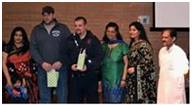 The event had a great start with a warm welcome from Ameeta Ambe followed by singing of the national anthems of both countries representing our love and respect for the country we came from and the nation that has accepted us, granting even citizenship.
The event had a great start with a warm welcome from Ameeta Ambe followed by singing of the national anthems of both countries representing our love and respect for the country we came from and the nation that has accepted us, granting even citizenship.
A short presentation in the program gave the context and purpose of the event, organizations involved and the great need for us to intertwine with the mainstream, and give back to the community something tangible. Organizers felicitated Mr. Ray Costain and Mr. Dan Ruscitto, members of the Carnegie EMS department.
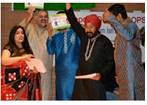 An entertaining Bollywood Jeopardy program led by Pradeep Fulay followed, with a collection of questions based on popular Hindi songs and movie clips. Interesting Jeopardy-like questions followed. A highlight of the evening was a raffle draw ticket at the end. The event had a good balance of excitement, good citizenship, fun, camaraderie, and was a well-run evening program.
An entertaining Bollywood Jeopardy program led by Pradeep Fulay followed, with a collection of questions based on popular Hindi songs and movie clips. Interesting Jeopardy-like questions followed. A highlight of the evening was a raffle draw ticket at the end. The event had a good balance of excitement, good citizenship, fun, camaraderie, and was a well-run evening program.
The event raised slightly over $3000, and was donated to Military Connections, Pittsburgh; Officer Down Memorial, Canonsburg PA; Volunteer Fire and Rescue, Carnegie PA; and Lakshya Foundation, Pune.  ♣
Rally in Mt Lebanon Against Ethnic Violence
Posted by admin in April 2017 on April 2, 2017
By Premlata V.
e-mail:Â ThePatrika@aol.com
Sunday afternoon, 4:30 PM, December 18, 2016. The last shopping Sunday before Christmas. Subfreezing temperatures. The gentle wind made it miserable to be out in the open. But that did not stop several hundred residents of Mt. Lebanon, many with young children, to assemble in the open at the Mt. Lebanon Rec Center in their winter gear. Hot coffee, tea and chocolate served was enough to keep them warm.
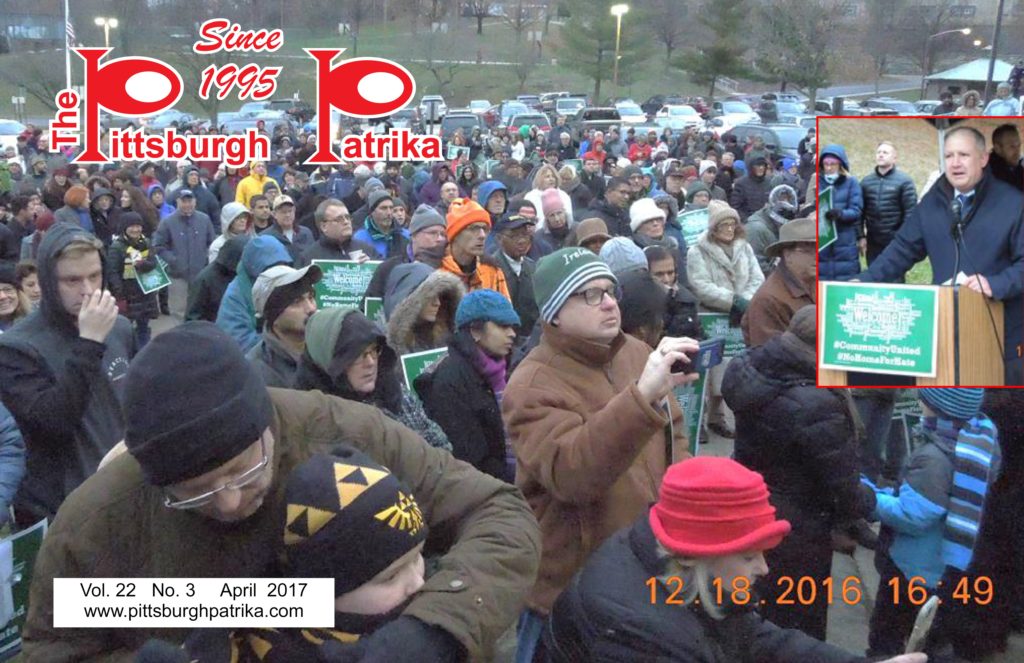
 The cover page for the April 2017 issue.
They assembled in response to Pennsylvania state Rep. Dan Miller’s call for a Rally for Unity to show the community’s response to stray incidents of hate crimes. Addressing the gathering, Miller — he represents the State House District 42 (South Hills) in Harrisburg — said, “While perhaps few in number, the recent spike in identity-based and hate-related incidents have caused many to be concerned. We must come together publicly to reaffirm our shared values and commitment to inclusion. I believe we will send a clear message that actions which make people feel less safe or unwelcome are not reflective of our community, and will not be accepted.â€
That the South Hills community responded so quickly shows that people there took these stray events seriously before they become a pattern. Leaders of the Jewish, Christian and Muslim faiths and representatives of African-Americans and other groups addressed the gathering, echoing Miller’s central message. Not surprisingly, given our apathy, Indian representation on the podium was conspicuous by its absence, even though a large number of professional Indians live in the area.
 Roosha Mandal and Mythri Sundar (see the picture on the side) braved the cold and gave a brief recital of Indian dances, making up for the inexplicable absence of Indians at the podium or in the gathering. Remember, one of the victims of the hate crime there was Ankur Mehta, an Indian-American.
Roosha Mandal and Mythri Sundar (see the picture on the side) braved the cold and gave a brief recital of Indian dances, making up for the inexplicable absence of Indians at the podium or in the gathering. Remember, one of the victims of the hate crime there was Ankur Mehta, an Indian-American.
It was a rare feat to see Indian dancers wearing gloves and ballet shoes to keep them warm. Later, Roosha and Mythri told me,â€It was not easy to do jatis on concrete floor and show mudras with gloves on in freezing temperatures.
A highlight of the event was Pastor Jim Magaw (see the picture) from the Unitarian Universalist Church of the South Hills singing the famous Woody Guthrie song, This land is Our Land, appropriate for the occasion.
Rep. Miller sent a strong message when he declared, “I want people to know that they are welcome in Mt. Lebanon, irrespective of their land of origin, the color of their skin, or where you worship. You are welcome.†It made this immigrant woman who has lived here over 30-plus years feel very welcome and included.    ♣
On Hate Crimes Against Indian-Americans
Posted by admin in April 2017 on April 2, 2017
By Kollengode S Venkataraman
Strikingly, in his very first State of the Union address as President, Donald Trump started the address by condemning the hate crimes committed in the weeks after his ascendancy to the presidency. He singled out the vandalism on Jewish places and generically mentioned the Kansas shooting. These are Trump’s words: “Recent threats targeting Jewish Community Centers and vandalism of Jewish cemeteries, as well as last week’s shooting in Kansas City, remind us that while we may be a Nation divided on policies, we are a country that stands united in condemning hate and evil in all its forms.†Trump’s speech writers did not mention the ethnic background of the Kansas shooting. Here are the details:
Olathe, Kansas. February 22, 2017. Adam Purington, 51, a White man, shot two Indian immigrant engineers, Srinivas Kuchibhotla, 32, and Alok Madasani, also 32, killing the former and wounding the other with gunshots. As he was shooting, witnesses said, he shouted, “Get out of my country.†Purington was a US Navy veteran and a former pilot. Purington also shot another White man, Ian Grillot, who tried to intervene.
The Kansas shooting was not an isolated event. Consider these:
- Last November, soon after the election, Jeffrey Burgess, 54, without any provocation, hurled ethnic slurs and physically assaulted an Indian-American, mistaking him for a Middle Easterner. This happened at a South Hills restaurant. The details were covered in the last issue.
- Lancaster County, South Carolina. March 2, 2017. Harnish Patel, the owner of a convenience store, was shot dead with multiple gunshots right in the front yard of his home late night by an unknown criminal. The County Sheriff’s office said this (as reported in South Carolina’s Post and Courier): “We don’t have any direct evidence that tells us it’s an ethnically motivated killing… … but we are working hard to find out.â€
- Seattle, Washington. March 3, 2017. Deep Rai, a Sikh, was shot in his driveway by an unknown gunman, who was shouting, “Go back to your own country.â€Â Rai prefers to remain anonymous.
Coming in such quick succession in the wake of Donald Trump’s victory last November, hate-crimes based on ethnicity and faith cannot be taken as stray events. After all, during the campaign, candidate Trump’s anti-immigrant rhetoric was shrill, targeting mostly Latinos. Given the economic hardships the less educated, rural and poor Whites face, it does not take long for them to vent their anger on all immigrants who do not look like one of them. People who stand out by their looks (skin tone, color, facial features; or dress codes like yarmulke, turban, etc.); food habits (“ethnic†restaurants, and grocery stores); or faiths (synagogues, mosques, gurudwaras and Hindu temples) become targets.
Educated Indian immigrants in the US and their parents in India see America as the land of freedom, opportunity, reward for hard work and wealth. This is by and large true, particularly in a booming economy as after WW II; or in crisis times (as in the Y2K era). While immigrants’ success stories are widely shared, stories of people who fail for reasons beyond their control are brushed under the carpet.
The other side of the immigrant history is open discrimination and hostility towards immigrants before their assimilation. Blacks were brought centuries ago as slaves against their will. Their assimilation continues to be a work in progress.
Even White immigrants who came later did not have it easy in this Land of the Free. Hostility towards them based on ethnicity (Italians, Slavs, Polish, Irish, etc.) and faith (Jews, Catholics, etc.) is well documented. But the college-educated and anglicized Indian immigrants arriving today seem to have a poor understanding of this immigrant history in the US. They would help themselves by searching the web with phrases like “Historical prejudice towards the Irish,†and then replacing “Irish†with “Italian,†“Slavs,†“Polish,†“Japanese,†“Jews,†“Mormons,†or “Catholics.†What they will see in their search will be a revelation for many.
This will give them a composite picture of the US as “the Land of Freedom, opportunity, wealth, and reward†on the one hand, and a society that is hostile towards new comers on the other; and on the slow, difficult and painful process of getting “mainstreamed.â€Â This is the pattern in the history of the slow assimilation of immigrants in the US.
What should we do and how do we respond to the hate-crimes against us? As we wrote in the last issue, instinctively retracting into our shells out of fear or apathy as a defensive response is the wrong course of action. While we let the law takes its course and deal with the Puringtons, we need to develop contact with local elected and law enforcement officials in the communities where we live. Remember, in emergencies, you call the local 911 or your neighbors for help, not your Congressman in Washington, or your representative in Harrisburg.
If you get an ethnically offensive phone call, or if someone screams racially offensive epithets in parks or shopping malls, first do not get into any argument with the person or persons who provoke you. Report it to your local police. These acts of verbal aggression, when they go unchecked, have the potential to become acts of physical violence. Mayors and law enforcement officials where we live need to know of these incidents for them to take preventive steps to raise awareness in your communities for people to live in peace.
We also need to set our view on a longer, wider horizon. Trying to get the attention of the national media or elected officials in the US Congress in Washington DC or in the state capitol in Harrisburg is what everyone tends to do. However, this is done after the hate crimes are already committed and the damage already done. We need to proactively prevent, or at least reduce, the occurrence of these violent crimes.
An effective way to do this is to be in touch in our individual capacities with local communities where we live, and participate in community events, and be seen by mayors, other city elected officials, police and the people at large as responsive citizens. Yet, most of us do not make it a priority to attend (an easy thing to do) or organize local community events. Don’t wait for your temples to take the lead on this. They won’t. Their priorities are different and they are in their own orbit.
Granted, these activities are not newsworthy enough to draw the attention of local or national TV networks, or your Congressman. But this is our best bet to integrate ourselves into the American mainstream.
Are we paying attention to this part of what we need to do? If the absence of Indian faces in the community event last December in South Hills against ethnic violence is any indication, we don’t seem to see any value in this. See the next article on this.   ♣
On the Recent Jallikattu Protest in Tamil Nadu
Posted by admin in April 2017 on February 7, 2017
By M Meenakshisundaram, Tiruchy, Tamil Nadu, India
e-mail:Â mmsbaskar@yahoo.co.in
Pongal, a harvest festival in Tamil Nadu, usually falls on January 13 or 14. This marks the beginning of the transit of Sun’s northward travel — uttaraayanam. This festival goes by other names, Sankranti, Lowry and others in other parts of India.
The events around this years’ Pongal in Tamil Nadu  is a precursor to what I would call as an event of the century, in any case in the Indian context. These events were around the Jallikattu game, a rural pastoral game deeply rooted in the cultural landscape of agricultural population in the southern part of the Tamil Nadu 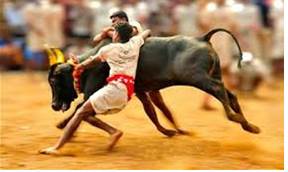 state.  For thousands of years, neutered bulls have been used for tilling the soil. Only in recent decades, mechines are being used for tilling the land. So, cows and bulls have been an integral part of farming in Southern India.  Jallikattu is an old agrarian game with youngsters trying to tame a well-groomed and well-fed bull, traditionally used to mate with cows. Young men show their skills in taming an aggressive bull.  In YouTube, you can see many clips of the Jallikattu game. The bull is not killed or hurt in this contest. But sometimes, not only the bulls, but also the young men trying to tame them, get hurt, even killed. Here is a video clip of the real Jallikattu event.  Evidently, this high-adrenaline game is not for the faint-hearted. Prize money and the chance to display one’s raw courage and skills are strong attractions for young men to participate in this game.
state.  For thousands of years, neutered bulls have been used for tilling the soil. Only in recent decades, mechines are being used for tilling the land. So, cows and bulls have been an integral part of farming in Southern India.  Jallikattu is an old agrarian game with youngsters trying to tame a well-groomed and well-fed bull, traditionally used to mate with cows. Young men show their skills in taming an aggressive bull.  In YouTube, you can see many clips of the Jallikattu game. The bull is not killed or hurt in this contest. But sometimes, not only the bulls, but also the young men trying to tame them, get hurt, even killed. Here is a video clip of the real Jallikattu event.  Evidently, this high-adrenaline game is not for the faint-hearted. Prize money and the chance to display one’s raw courage and skills are strong attractions for young men to participate in this game.
The Jakkikattu Vendum (“We Want Jallikkattu”)Â movement started off in distant Alanganallur, Madurai with about 300 or 400 villagers participating.
The protests happened just after Pongal, when it was clear that there was no possibility for the Jallikattu game to take place. The Indian federal government has banned it a few years ago . There was also a small number of supporters joinrf the Alanganallur crowd, not a sizable crowd at all. The Police, as is their usual wont, arrested the demonstrators when there was no provocation.
The Jakkikattu Vendum (We Want Jallikkattu) Â movement started off in distant Alanganallur, Madurai with about 300 or 400 villagers participating. This happened just after Pongal, when it was clear that there was no possibility at all. There was also a small section of supporters joining the Alanganallur crowd, not a sizable crowd at all. The Police, as is their usual wont, arrested the demonstrators when there was no provocation.
The highhandedness of the police prompted a discussion in the social media with the suggestion that they converge at the Marina, demand scrapping of the ban on Jallikattu and release of the arrested. This was on 17th January, two days after Pongal.
The crowd that gathered at Vivekananda House along the Madras Beach, was a mere 500. However, with the phones in almost everybody’s hand, the social media was abuzz and in a matter of two hours the crowd increased to a few thousands. As the day wore on, more and more converged, and by evening the crowd was around 10,000. The students there then decided not to leave the scene until the ban was revoked and Jallikattu could be held.
The other demand was to release those arrested in Madurai. There was a steady stream of protesters making a beeline to the Marina. The dawn of 18th January saw an outpouring of girls and boys and girls to the spot. The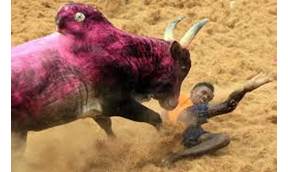 numbers swelled to beyond 50,000 and by that evening it was beyond 75,000. After that there was a deluge. It went beyond counting with a continuous inflow and at no stage there was any sign of the flow stopping. The third day saw homemakers, middle aged and even senior citizens joining the protests. All through this the sense of discipline exhibited by the youngsters was incredibly stunning!
numbers swelled to beyond 50,000 and by that evening it was beyond 75,000. After that there was a deluge. It went beyond counting with a continuous inflow and at no stage there was any sign of the flow stopping. The third day saw homemakers, middle aged and even senior citizens joining the protests. All through this the sense of discipline exhibited by the youngsters was incredibly stunning!
- Have you ever witnessed agitators helping the law-enforcing folks in directing traffic so that the flow is smooth? Have you ever seen agitators, forming rings around the young girls so that they can sleep without danger of any threat from antisocials? Have you ever seen agitators ensuring smooth supply of food packets, tea, coffee to all?
- There were quite a few philanthropists in the crowd and outside as well, who, moved by the sincerity and plight of the youth wholeheartedly pooled in their mite. Ragava Lawrence, a dance master and an actor of sorts, had the presence of mind to provide mobile eco toilets to the girls at the Marina (protest sites all over TN had these toilets).
- Have you ever observed agitators removing all garbage at the site and keep the surroundings clean? Have you ever witnessed parents bringing their daughters to the protest area and leaving them to stay overnight?
- Have you ever seen infants (3, 4, 5 month old) with their mothers using the pallu as a shield from sunlight sitting for 5 , 6, 7 hours on the sands? There were several pregnant women as well.
- Have you ever witnessed an agitation where the numbers were about 300,000 to 400,000 and on some days beyond 700,000, gather peacefully, dignified, without ANY stone throwing, bus burning, arson etc in independent India?
- Have you seen a protest, where in the multitude of people, ambulances were able to pass through quickl the agitators who took extra effort to ensure quick passage?
- Have you ever seen a protest held for seven days where politicians of all colors, were effectively kept away from participating in the agitation. No politician was allowed anywhere near the scene. Even film personalities were not welcome.
- Lastly have you ever read in history any agitation that sprang out of spontaneity, yet had no leader at all?
Well all these happened here at that Marina for six days six nights, back-to-back. But wait! This was not restricted to the Marina. It was so in many second- and third-tier towns such as Trichy, Coimbatore, Madurai, Salem Tirunelveli, Tuticorin, Erode, Tanjore, Vellore, Pondy, Pudukottai, Dharmapuri, Namakkal,Dindigul, Karur, and many others. Not just the cities, it was also held in innumerable villages. Everywhere it was the youth, boys and girls who stayed put day AND night,
This is the stuff of fairy tales and the youngsters were the heroes of this unbelievable Utopian like protest. Tamil heritage took center stage among jeans-clad churidar-wearing youth of TN.
What a heartening exhibition of civic sense, cultured behaviour, and concern for preservation of heritage!
Naturally, the central and state Governments had to oblige. The Chief Minister went to Delhi on Thuirsday night, met the PM on Friday morning, Â stayed back finalised the draft bill, got it vetted by the law, home and environment ministries, obtained president’s consent and caused the ordinance to be issued on Saturday evening. The assembly convened on Monday for its regular opening in the new year, where after the Governor’s customary address, the assembly reconvened and the ordinance bill was passed and it becam a law last evening.
I am sure that this nonviolent protest would have warmed the mahatma’s heart.
I am very very proud to salute the youth here for having conducted what I would term as the best protest in independent India since 1947.   ♣
Indian-American Undergrad Students at Pitt in their Stunning Saris
Posted by admin in January 2017 on December 28, 2016
The picture below is the cover page for the January 2017 issue of The Pittsburgh Patrika. This is NOT a PhotoShop job of superimposing pictures of Indian models in saris on an American backdrop.
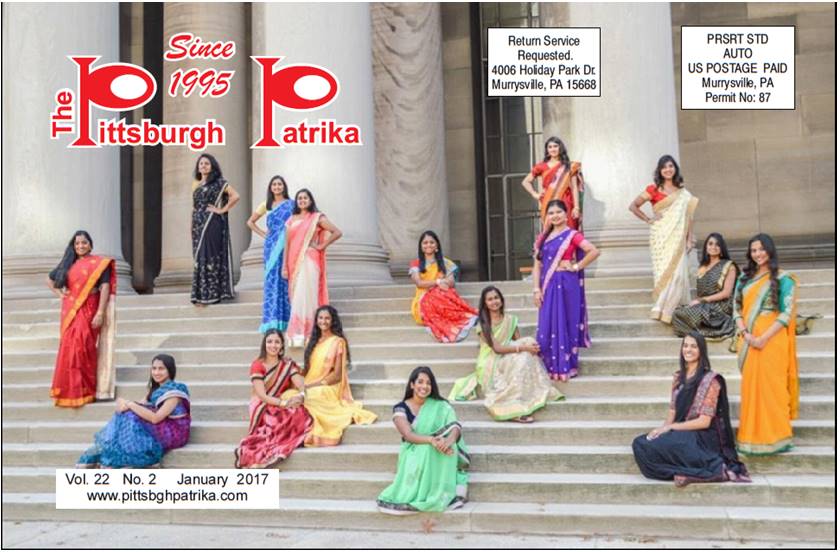
These young women are the University of Pittsburgh’s US-born undergrad students of Indian origin belonging to Nrthyamala, an organization dedicated to Indian classical dance.  Sareena Fayaz, an undergraduate student at the university, took this picture in front of Mellon Institute in Oakland.
One wonders if a bunch of today’s every-day Indian college students in New Delhi, Mumbai, or Bangalore would feel comfortable posing for this kind of pictures wearing saris.  —  By Kollengode S Venkataraman   ♣
“Ab ki bar, Trump Sarkar !” * or “Now onwards, Trump Commands!”
Posted by admin in January 2017 on December 28, 2016
By Kollengode S Venkataraman
On the basis of getting a majority of electoral votes, which is how we elect our presidents, the maverick Donald Trump defeated Hillary Clinton, even though he got 2.5 million fewer popular votes. Trump will be our president for the next four years. We wish him well.
Alt-Right right-wingers filling the airwaves and their supporters nationwide are legitimately gleeful their candidate won. But the traditional GOP establishment and conservative intellectuals are taking a wait-and-see attitude towards Trump’s presidency. They have reason to be cautious. They are on uncharted waters even though they have the White House and the two chambers in the US Congress. Trump is not an ideologue, and is unpredictable. Further, he is a deal maker, a trait he boasted about himself as his strength on the campaign. So, he will be open to compromises on working with Democrats and compliant Republicans in Congress.
More importantly, for his electoral victory he owes nothing to the GOP establishment and Congressional leaders. He was victorious in the elections on his own strength in spite of the GOP establishment’s condescending opposition to him. Politicians have long memories. As a businessman-turned-politician, Trump may neither forgive nor forget his enemies. Thus, the GOP-controlled House and Senate leaders may find the maverick President Trump difficult to work with.
In the meantime, both political parties will dissect what went wrong and try to win back the White House. If Trump is ineffective, it will be easy to take the White House back; but if he delivers even half of what he promised, he would be changing the ground rules of American politics.
End note: The way Trump paraded, as in reality shows, potential nominees for key cabinet positions and the way the nominees obliged him in the charade are indications for President Trump’s style of governing.
For other articles on this presidential election, read here on the perversion of the two-party system, and here on the final stretch of the campaign between Clinton and Trump leading up to the November election.
* During the October Diwali celebrations among Indians in New York, Trump boasted this Hindi expression borrowing from Modi’s Ab ki bar Modi Sarkar.   ♣
On the Hate Crime in South Hills Village Mall
Posted by admin in January 2017 on December 28, 2016
By Kollengode S Venkataraman
e-mail: Â ThePatrika@aol.com
On November 23, in a violent incident that can only be called a hate crime, Ankur Mehta, an Indian-American, was attacked by a 54-year old Caucasian, Jeffrey Allen Burgess. This happened during lunch hour at Red Robin, a restaurant in the South Hills Village Mall. Burgess hurled ethnic slurs against Mehta, mistaking him for a Middle Eastern man of Islamic faith. Unprovoked, he attacked Mehta, elbowing him on the head and punching him. Mehta needed medical attention.
Bethel Park is not in the rural boondocks. It is a bedroom community (95% white population) to Pittsburgh with a median annual household income of $70,000 (for the state it is $55,000), and a population better educated than the state average. An ethnicity-based hate crime in such a bedroom community is bad enough. What makes this scarier is that we have people in urban America today who have not learned to show respect to people of other faiths such as Hinduism, Sikhism, and Islam. Talk about the cultural illiteracy of people in these United States!
One wonders if this hate crime is a random event. This happened in the wake of the poisoned atmosphere in the 2016 presidential campaign. The GOP candidate Trump then, now our President-elect, used provocative languages appealing to working class White voters. They believe they bore the brunt of the economic fallout of globalization with stagnant wages eroding their lifestyle, while professionals and the wealthy made huge gains. This is true. But all working class Americans suffered in this transition, with working class Blacks and Hispanics suffering even more. But Trump succeeded in polarizing voters in terms of ethnicity (mainly against Hispanics) and faith (mainly against Islam). If such hate-crimes can happen in Bethel Park, you can imagine the attitude of less-educated rural Americans toward immigrants.
Before we react defensively about such attacks on Indian-Americans because of the way we look and of our faiths, we need to know the US history towards immigrants. Ever since the nominal ending of slavery in 1863, race relations in the US have always been a work-in-progress. Later, race relations only got complicated. With the arrival of the Irish, Italian, East European, and Jewish immigrants in the 19th and 20th centuries, the mainstream “native†Whites expanded their hatred to these new immigrants. Irish immigrants were not even considered White.  Indians and people belonging to faiths outside the Judeo-Christian religions are the latest ones exposed to this hatred by those among the Whites who are ill informed. Paradoxically, among these haters one would find the assimilated Whites, who, two or three generations ago, were at the receiving end of this ethnic hatred. Sadly, all new immigrants’ attitude—including Indian immigrants’ attitude—towards Blacks is nowhere near what it needs to be.
In this milieu, the good news is that many in the US mainstream are aware of this history. Sheldon Ingram of WTAE reported that a few Indian-Americans and several mainstream activists from the South Hills area were present at the preliminary hearing for Burgess in court, showing support for Ankur Mehta. But many Indian-Americans are unfamiliar with the history of immigration in the US. They may instinctively retract into their shells out of fear or apathy as a defensive, convenient response.
But this is not only immature, but exactly the wrong course of action. While we let the law takes its course and deal with Jeffrey Burgess’ hate crime, we need to set our view on a longer, wider horizon. Wherever we live, we need to frequently interact with people around us in our individual capacities. This takes time and effort. But this is our best bet to integrate ourselves into the American mainstream.
Given our fragmented social groupings here, it is unrealistic to expect our temples or other social groups to take a stand on, or even comment on, hate crimes against individual Indian-Americans like Ankur Mehta. These organizations are traversing in their own orbits far removed from ground realities.   ♣
Red & Blue Counties Paint a Starker Picture
Posted by admin in January 2017 on December 28, 2016
By Kollengode S Venkataraman
e-mail: ThePatrika@aol.com
“Red States†and “Blue States,†and “Battleground States†are now part of our everyday vocabulary. Here is the map for the 2016 results. Just to elucidate the point further, as you can see in the table below, many  states repetitively vote for one party only, irrespective of the merits of individual candidates or their stand on key issues of the time. The two parties take these states for granted either for or against them and move on.
states repetitively vote for one party only, irrespective of the merits of individual candidates or their stand on key issues of the time. The two parties take these states for granted either for or against them and move on.
Voters in only a handful of states carefully weigh the candidates and their stands on the  burning issues of the day and switch back and forth in the quadrennial elections. The outcome of the elections is predicated by how these Battleground States swing. The parties spend lots of their time and resources in these states.
burning issues of the day and switch back and forth in the quadrennial elections. The outcome of the elections is predicated by how these Battleground States swing. The parties spend lots of their time and resources in these states.
If we drill down the idea of the Red and Blue states to counties in each state, we get a stark picture. Here is our own state of Pennsylvania. Pennsylvania is a Red Sea of counties with a few Blue islands here and there. The Blue islands are urban centers with dense population around Pittsburgh, Philadelphia, Harrisburg, Allentown… …
If you take this one step further and look at how the votes split between Clinton and Trump, the picture gets starker. In the picture below, Number 1 is for Allegheny County, with Pittsburgh as its center. The table below shows the details of the vote split between Clinton and 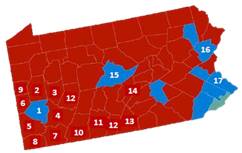 Trump and the population of each county. While Clinton got a respectable 16% spread of votes (56% to 40%) over Trump in Allegheny County, in the surrounding
Trump and the population of each county. While Clinton got a respectable 16% spread of votes (56% to 40%) over Trump in Allegheny County, in the surrounding  counties, Clinton got beaten with spreads varying between 25% and 60%. What saved her from humiliation in a generally Democratic state was the smaller populations in these counties. If you go further into the interior, the margin of loss for Clinton was even sharper, as in Juniata County, where the Clinton-Trump split was17%-79%.
counties, Clinton got beaten with spreads varying between 25% and 60%. What saved her from humiliation in a generally Democratic state was the smaller populations in these counties. If you go further into the interior, the margin of loss for Clinton was even sharper, as in Juniata County, where the Clinton-Trump split was17%-79%.
Even in some of the Blue counties (Center, Monroe and Buck Counties), Clinton won by a wafer-thin margin. The pattern of a Red Sea with islands of Blue counties holds in other states as shown further below for Ohio, Oregon, Illinois and Texas.

Now it is obvious why the country is divided sharply between urban and rural Americans on every measure — age, race, education, income, social values, beliefs… … With this sea of Red counties, Republicans have a big majority among local elected officials across the nation, further adding to this disconnect. So, governing becomes difficult since the rancor never subsides after the elections. We could as well be living in two different countries.
Clinton lost in the Electoral College even after getting 2.5 million more popular votes nation-wide than Trump. If she had reduced the margin of loss in rural counties in Battleground States by reaching out to the rural, less educated, and mostly white voters, she would have won the election.
We can only say this to both political parties on the way they strategize their calculus in national elections: This is no way to run your railroad. If you are addressing the Democrats, you can even add this rhetorical flourish: This is one hell of a way to run your railroad!  ♣
Madhu Aggarwal Recognized for Helping Weirton’s Uninsured and the Needy
Posted by admin in January 2017 on December 28, 2016
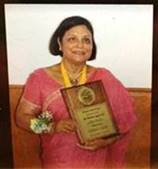 Dr. Madhu Aggarwal, a resident of Weirton, WV for over 30 years, was recognized by the City of Weirton for her work for over twenty years helping the uninsured and the needy in the Weirton area get obstetrics services. She was inducted into the Weirton Hall of Fame in a ceremony in October for Philanthropy.
Dr. Madhu Aggarwal, a resident of Weirton, WV for over 30 years, was recognized by the City of Weirton for her work for over twenty years helping the uninsured and the needy in the Weirton area get obstetrics services. She was inducted into the Weirton Hall of Fame in a ceremony in October for Philanthropy.
In this award, the citizens of Weirton honor those who contribute to improving the world around them. Weirton’s citizens nominate individuals for their work in Business, Industry & Professions, Education & Religion, Music & Fine Arts, Philanthropy, Public Service, and Sports & Athletics. Among the past inductees are educators, athletes, musicians, businessmen, and community volunteers.
Weirton, adjacent to Pittsburgh, was once a buzzing steel-making city, with 13,000 people working in the steel industry at its peak in the 1960s. It had an ethnically diversified, and perhaps segregated, population of nearly 30,000. Today, steel is no more the lifeblood of Weirton. Weirton’s population is 20,000, with steel employing barely around 900 people. Today, the healthcare industry, retail services and steel are the major employers in Weirton, with healthcare and retail services, each employing over 1000 people, more people than steel. Weirton today is a bedroom community for people commuting to work in the Greater Pittsburgh area, including the businesses around the Pittsburgh airport.
Aggarwal founded in the 1980s an obstetrics clinic for the uninsured and underprivileged residents around Weirton, with support from the Weirton Medical Center and its OB staff. She also has helped found a clinic in nearby Steubenville, OH. In 2000, she instituted scholarships for college-bound students in schools around Weirton. She also volunteers at the Jubilee Soup Kitchen in Pittsburgh. The Patrika readers know of her and her husband Krishan’s association with the Hindu-Jain Temple. She was the president there, and is the chairperson of its board of trustees. She chairs a charitable foundation to serve poor patients in remote areas in India, treating thousands of people for free or at a nominal cost.
Madhu was born in Punjab, India. Her father was in the Indian military services and her mother, a teacher. After early schooling in Jammu and Rajasthan, she earned her medical degree from the SMS Medical College in Rajasthan.
She married Krishan, also a physician, in 1976. The young Aggarwals arrived in the US in 1977, with Madhu starting her residency at St. Francis Hospital in Pittsburgh in OB/GYN. They moved to Weirton in 1983, starting their practice. Living in Weirton for over thirty years, they raised their two sons, Neil and Manu. Neil is a clinical psychiatrist at Columbia University, NY, and Manu is the marketing director for an e-Marketing company. Both are married. She loves Bollywood movies and songs, travel, and enjoys reading  whenever she finds time. She and her husband Krishan Aggarwal very recently moved to Moon Township.   — By K S Venkataraman (e-mail:  ThePatrika@aol.com.)   ♣
Obituary:Â Parandham Koduri (1936 to Oct 11, 2016) E-R Physician, Affable and Helpful
Posted by admin in January 2017 on December 28, 2016
 by Bhanu Pandalai and Premlata Venkataraman
Email: Â ThePatrika@aol.com
With sadness, we record the passing away of Dr. Parandham Koduri of Monroeville, PA in the early hours on Tuesday, October 11. He passed away after a brief illness. He was 80.
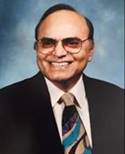 Parandham, as he was known to many, was a friendly and approachable person. He loved being a doctor, and would quickly develop a good rapport with his patients. In 1971, he arrived in Pittsburgh for his residency at the Columbia Hospital, Pittsburgh in Emergency Medicine. After a stint in Minnesota, he came back to East Suburban General Hospital (now Forbes Regional Health) in 1978, as the head of Emergency Medicine.
Parandham, as he was known to many, was a friendly and approachable person. He loved being a doctor, and would quickly develop a good rapport with his patients. In 1971, he arrived in Pittsburgh for his residency at the Columbia Hospital, Pittsburgh in Emergency Medicine. After a stint in Minnesota, he came back to East Suburban General Hospital (now Forbes Regional Health) in 1978, as the head of Emergency Medicine.
He was actively involved as a volunteer at the S. V. Temple, serving in many official capacities. At the Temple he was the President of the Executive Committee and later the Secretary of the Board. Most importantly, he was known as a peacemaker among contentious key members of the temple who did not see eye-to-eye on the temple’s temporal matters. He was also active in the Rotary Club in Monroeville.
Prema recalls his encouraging words to the articles she wrote in this magazine, teasingly telling her to write more than her husÂband. Bhanu too had very poignant memories of his care and support during her husband’s illness.
Parandham was born in Korutla village in Telengana in 1936 and was the first in his family to go to college and then on to medical school. A talented surgeon, the Government of India awarded him a gold medal for his surgical skills. In 1961, he married Tanya, who grew up in Rajamahendravaram (Rajahmundry) in Andhra Pradesh. Parandham had a daughter and two sons.
He was facile in English, Telugu, Hindi and Urdu as well. An eclectic Hyderabadi, he loved Urdu poetry — shayaris, gazals, and nazm. Tanya, his wife, recalls him writing to his father in Urdu!
The funeral services for Parandham were held at the Beinhauer FuÂneral Home on West Liberty Avenue with a large number of Parandham’s friends and relatives sharing their grief with the Koduri family. Sunil and Venugopal, Parandham’s sons, performed the Vedic Hindu cremation rites with help from Shri Venkatacharyulu and Shri Varadarajan, the priests from the S.V.Temple.
Parandham leaves behind his beloved wife Tanya; daughter Sailaja and family of Pittsburgh PA; first son Venugopal and family of Suffolk, VA; second son Sunil and family of Seattle, WA; and his grandchildren — Vishal, ShiÂvani, Natasha, Rohan, Maya and Hans Raj. He also leaves behind a large number of friends in the Pittsburgh metro area.  ♣
Britannia, You’ve Come a Long Way, Baby!
Posted by admin in January 2017 on December 28, 2016
By Kollengode S Venkataraman
e-mail: Â ThePatrika@aol.com
British Prime Minister Theresa May was in India in November to strengthen the British economy, months after the Brexit referendum voted for leaving the EU. She was seeking the support of Britain’s erstwhile “Jewel in the Crown†to bolster trade in the era of emerging India and the not so-great Britain.
In today’s world, one sure way to court India is to court Indians living among you. So, May hosted a Deepavali function at 10 Downing Street, days before her official visit to India. She lit a traditional lamp and said, “The festival played an important part in our national life. When we analyze the true meaning of Diwali, its relevance extends beyond India, beyond the Indian diaspora and even beyond the Hindus, Jains, Sikhs and Buddhists who, in different ways, mark the festival. Its messages apply to every single one of us – whatever our background, whatever our faith.â€
She continued, “I haven’t read all 24,000 verses in the epic about Lord Rama’s return to Ayodhya. But I do know the story of his homecoming from the many Diwali celebrations I have attended in my own constituency over the years. The values he [Rama] embodied are values which we can all heed. Values of charity, sacrifice and responsibility; to paraphrase Mahatma Gandhi: losing ourselves in the service of others.â€
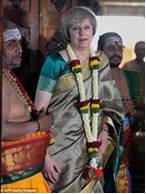 She surprised everyone again during her visit to India in November when she visited a Shiva Temple in Bengaluru, dignifiedly wrapped in a traditional silk sari (see the picture), even partaking in the arati at the temple.
She surprised everyone again during her visit to India in November when she visited a Shiva Temple in Bengaluru, dignifiedly wrapped in a traditional silk sari (see the picture), even partaking in the arati at the temple.
Quite a transformation for a British prime minister, one of whose predecessors, Winston Churchill, in 1931, before he became the prime minister, refused to meet with Gandhi who was in London, referring to Gandhi as “half-naked†and a “seditious fakirâ€!
For many Indians, this transformation is bittersweet. After all, the British came to India as traders. Taking advantage of the weak and fragmented polity, the traders ended up ruling over the entire subcontinent for over 150 years. Finally, even after winning World War II in 1944, the empire collapsed, The British hurriedly left India in 1947, leaving the Indian subcontinent in a mess, the effects of which are seen even today.
All through the British occupation, even though individual British archeologists, historians and linguists took interest in India, the English Establishment — British bureaucrats, army officers and even lowly clerks — with their stiff upper lips, barely tolerated the “native†Indians. The desi Brown sahebs took their cue from their Goras, becoming even more insufferable in dealing with the “natives.â€
But years later, beginning in the1960s, Indian engineers, scientists and doctors migrated to the US and Canada and made their imprints in universities, 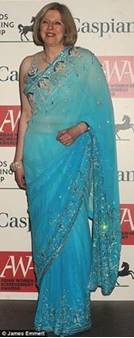 corporate R&Ds, hospitals, and as entrepreneurs. This greatly enhanced India’s image globally. In the UK itself, Indians account for over 20% of the doctors in its healthcare system. The large number of Gujaratis from Africa who landed in the UK as refugees became entrepreneurs running successful businesses.
corporate R&Ds, hospitals, and as entrepreneurs. This greatly enhanced India’s image globally. In the UK itself, Indians account for over 20% of the doctors in its healthcare system. The large number of Gujaratis from Africa who landed in the UK as refugees became entrepreneurs running successful businesses.
Ater India liberated itself again in the 1980s from the clutches of the Nehruvian socialist ideology, India’s innate entrepreneurial instincts resurged. Today, with much of the industrialized economies of the world (North America, Western Europe, and Japan) dormant, and China slowing down, India has an impressive 7% growth rate. With Britain caught in its own vice in the Brexit referendum and the threat of its weakening links in the EU, it is looking for new business opportunities in India, but this time, probably on India’s terms. No wonder Britain comes calling once again, this time doing it with charm, in contrast to Colonial days’ disdain, condescension and guns! India is pragmatic. With its mercantile instincts, India is ready to work with its past ruler, but on its own terms.
And Theresa May made every right gesture to appeal to Indians. She looks trendy and fashionable in the contemporary sari, and carried herself with great élan and dignity in a traditional silk sari in Shiva temple in Bengaluru.
So, without appearing to be offensive to Prime Minister May, I am gleeful to declare, “Britannia, You’ve come a long way, baby!†  ♣
Sowmya Srinivasan’s Delightful Veena Arangetram
Posted by admin in January 2017 on December 28, 2016
By Shriram MurthyÂ
e-mail: dr.shriram.s@gmail.com
On June 26th, 2016, Sowmya Srinivasan, a student of Latha Sekaran, had her veena Arangetram recital at the 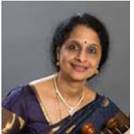 S.V.Temple auditorium in the presence of music connoisseurs, friends and families. Sowmya has been learning Veena from Latha Sekaran (picture on the left)) for the last six years. Her grandmother Smt. Rajalakshmi Gopalan, who plays and teaches veena in Chennai is Sowmya’s inspiration. Sowmya has also performed at the Cleveland Tyagaraja Aradhana under the guidance of Guru Neyveli Santhanagopalan.]
S.V.Temple auditorium in the presence of music connoisseurs, friends and families. Sowmya has been learning Veena from Latha Sekaran (picture on the left)) for the last six years. Her grandmother Smt. Rajalakshmi Gopalan, who plays and teaches veena in Chennai is Sowmya’s inspiration. Sowmya has also performed at the Cleveland Tyagaraja Aradhana under the guidance of Guru Neyveli Santhanagopalan.]
Senior percussion artistes, veterans Ravi Balasubramanian on the ghatam and Sriram Ramanan on the mrdangam accompanied Sowmya providing enthusiastic and encouraging support to the young veena player, which further enlivened her first solo recital.
The Arangetram started with the Navaragamalika Varnam, followed by Muthuswami Dikshithar’s Shri Saraswati Namostute.  In the next piece in raga Panthuvarali, Swati Tirunal’s Sarasaksha paripalaya maam, Sowmya delightfully brought out the Bhakti bhava (mood of devotion).
 The main piece of the evening was Tyagaraja’s popular work Chakkani raja, in the raga Karaharapriya, a sampoorna raga, the 22nd Melakarta raga, with all seven notes in both the arohanam and avarohanam.  The challenging phrases with swaraprasthanams were very beautifully rendered with able variations. The tani avartanam by the veteran percussionists was quite arresting. Sowmya then rendered a Tiruppugazh verse of the 16th century ascetic Arunagirinaadar followed by Swamy Dayananda’s Bho Sambho, a popular number performed by numerous artists. It was mesmerizing to listen to this piece on the veena.
The main piece of the evening was Tyagaraja’s popular work Chakkani raja, in the raga Karaharapriya, a sampoorna raga, the 22nd Melakarta raga, with all seven notes in both the arohanam and avarohanam.  The challenging phrases with swaraprasthanams were very beautifully rendered with able variations. The tani avartanam by the veteran percussionists was quite arresting. Sowmya then rendered a Tiruppugazh verse of the 16th century ascetic Arunagirinaadar followed by Swamy Dayananda’s Bho Sambho, a popular number performed by numerous artists. It was mesmerizing to listen to this piece on the veena.
Next, Sowmya rendered a tillana and the famous Western-sounding notes without any lyrics, inspired by Irish/Scottish melodies, popularized by Madurai Mani Iyer in the mid-20th century. Sowmya wrapped her evening recital with a Hari Bhajan in Tilang and a traditional Mangalam.
It is rare among youngsters growing up in America or even in India to learn to play on the veena and reach a level of giving solo recital. So, Sowmya’s dedication towards this pursuit is noteworthy. Sowmya, her guru Latha Sekaran and her parents would be pleased that all their collective efforts paid off well. We wish Sowmya well to reach greater heights in her musical journey in the years to come.   ♣
India’s Consul General Visits Pitt
Posted by admin in January 2017 on December 28, 2016
By Premlata Venkataraman
e-mail: Â ThePatrika@aol.com
The University of Pittsburgh’s Center of International Studies hosted a reception for Riva Ganguly Das, India’s Consul General at New York on Thursday, November 10 at the Barco Law Building. The faculty, uniÂversity officials and invited members of the Indian community attended the reception.
Consul GenÂeral Ganguly Das has served in many countries before her assignment in New York. In her general remarks, she said, in her postings to many countries she always was impressed by the vibrancy of people of Indian origin living there, and how well they socially and culturally have adapted themselves to their new environments even as they retained their cultural identity. In this respect, Pittsburgh’s Indian-American community is a fine example, she said. India considers the people of Indian origin living outside India as a big asset in strengthening its bilateral relationship in these countries.
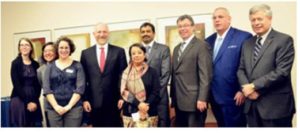
L to R: Rachel Jacobson, Lynn Kawaratani, Emily Rook-Koepsel , Ariel Armony, Consul General Riva Ganguly Das, Consul Trade Sreenivasa Rao Gudavalli, James Cook, Ira Gumberg at Pitt’s Asian Studies Center, and Chancellor Emeritus Mark Nordenberg.
She also pointed out that India is trying to learn from the dynamic and interdisciplinary academic environment in leading US academic institutions such as Pitt, and adapt it in top-of-the-line Indian academic institutions.
Earlier, Prof. Ariel Armony, the director of the university’s InternaÂtional Programs, highlighted the number of international students from India at Pitt. He also described the features of the South Asia Initiative, Pitt’s 3-year program focusing on the region in which India is front and center, geographically, culturally and technologically as well. India’s recent economic growth is an added new dimension. For the 2016-17 academic year, one interesting topic is India and Pakistan at 70: AspiraÂtions and Speculations. See the details here: www.ucis.pitt.edu/asc/events/southasia.
Mark Nordenberg, the Chancellor Emeritus of the University, in introducing the consular official, recalled India’s long tradition of learnÂing, teaching and transmitting knowledge accumulated from generation to generation spanning over four millennia. He acknowledged India’s comÂmitment to nonviolence, tracing it from the Mauryan emperor Ashoka, who lived 300 years before the Common Era to Mahatma Gandhi’s comÂmitment to civil disobedience and ahimsa.
Prof. James Cook, the acting director of the Asian Studies CenÂter, effortlessly emÂceed the events of the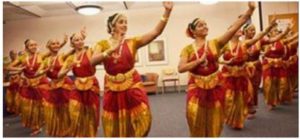 evening, starting with Bharatanatyam pieces by Pitt’s Nrityamala, a group of mostly Indian-American undergraduÂate students.
evening, starting with Bharatanatyam pieces by Pitt’s Nrityamala, a group of mostly Indian-American undergraduÂate students.
In responding to a question in the wake of the unexpected outcome of the US presidential elections, she said the US and India are mature democracies, with elections leading to a very peaceful transfer of power. She said, “The US-India bilateral relations can only go from strength to more strength because of the convergence of interests.â€
Note: The University of Pittsburgh offers Hindi courses. For details, contact Dr. Sugandha Verma at 724-934-4376.    ♣
Balamuralikrishna: A Rare Artiste Who Honored Arts Patrons and Other Artistes
Posted by admin in January 2017 on December 28, 2016
By Dr. Balwant Dixit (bdixit@pitt.edu) and Dr. P. Sundararaman (psundararaman@hotmail.com)
Editor’s Note: Kings and temples in South India have been patrons of artists for over 2500 years. Maharajas, nawabs, kings throughout the world have supported artists to showcase the grandeur of their kingdoms. In the last 100 years, with the kingdoms gone, elected governments have filled the void. The government of India in the 1950s founded the Indian Council of Cultural Relations and the Sangeet Natak Academi to promote arts and artistes. Indian music organizations routinely confer titles on musicians. While artistes vie with each other and lobby for these honors — scientists too are known to lobby for even Nobel Prizes — it is very rare to see artistes honoring other artistes and even patrons. One such artiste was Balamuralikrishna, the renowned Indian vocalist, who died in November 2016.  He was in his 80s.
H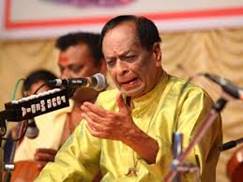 ere is the experience of Dr. Balwant Dixit, in his own words, on his receiving the honorific Kala Vipanchee from Balamuralikrishna in 1999. Vipanchi is the name of a type of lute, and also is a descriptive Sanskrit word for a person who loves and advances the causes of arts and music. Dr. Dixit for over forty years worked against many odds bringing artists from all over India on concert tours in North America. It is important to note that Dr. Dixit did NOT sponsor concert tours for Balamuralikrishna; the artist was not seeking a favor from, or returning a favor to, Dixit. Here goes Dr. Dixit:Â
ere is the experience of Dr. Balwant Dixit, in his own words, on his receiving the honorific Kala Vipanchee from Balamuralikrishna in 1999. Vipanchi is the name of a type of lute, and also is a descriptive Sanskrit word for a person who loves and advances the causes of arts and music. Dr. Dixit for over forty years worked against many odds bringing artists from all over India on concert tours in North America. It is important to note that Dr. Dixit did NOT sponsor concert tours for Balamuralikrishna; the artist was not seeking a favor from, or returning a favor to, Dixit. Here goes Dr. Dixit:Â
On November 13, 1999 I received a letter of invitation from Padmavibhushan Dr. Balamuralikrishna to attend a special ceremony to receive the title Kala Vipanchee at a special function to be held at the Madras Music Academy for my efforts in promoting Indian classical music in North America. It was somewhat of a surprise.
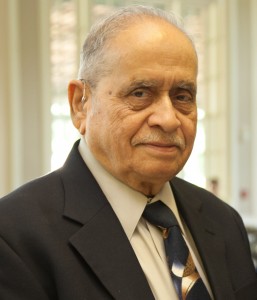 I flew to Chennai from Pittsburgh via Pune. At the Chennai airport, a representative from the Balamuralikrishna Trust warmly received me and two young women put flower garlands around my neck. I was driven to the New Woodland Hotel. I checked into a small bungalow located on the premises of the hotel. Soon, a welcoming phone call came from Dr. Balamuralikrishna himself enquiring me about my travel. He informed me about the next day’s function. A hotel attendant brought me tea and snacks. In the evening I was served a complete dinner in my room.
I flew to Chennai from Pittsburgh via Pune. At the Chennai airport, a representative from the Balamuralikrishna Trust warmly received me and two young women put flower garlands around my neck. I was driven to the New Woodland Hotel. I checked into a small bungalow located on the premises of the hotel. Soon, a welcoming phone call came from Dr. Balamuralikrishna himself enquiring me about my travel. He informed me about the next day’s function. A hotel attendant brought me tea and snacks. In the evening I was served a complete dinner in my room.
 Next day, another representative from the Trust drove me to the Madras Music Academy for the awards ceremony. The auditorium was packed with over one thousand people for the occasion. The ceremony started with an invocation. The Nrityalaya Aesthetics Society from Singapore presented Parinamam, a dance drama based on Ramayana. There were also a couple of music performances. This was followed by the awards ceremony recognizing individuals and organizations for promotion of the performing arts. Then Dr. Balamuralikrishna himself presented me the title Kala Vipanchee.
Next day, another representative from the Trust drove me to the Madras Music Academy for the awards ceremony. The auditorium was packed with over one thousand people for the occasion. The ceremony started with an invocation. The Nrityalaya Aesthetics Society from Singapore presented Parinamam, a dance drama based on Ramayana. There were also a couple of music performances. This was followed by the awards ceremony recognizing individuals and organizations for promotion of the performing arts. Then Dr. Balamuralikrishna himself presented me the title Kala Vipanchee.
I was told that the other recipients of the Kala Vipanchee honorific are Ustad Zakir Hussain; the veteran Ghatam vidwan “Vikku†Vinayakram; and Pandit Vijay Kichlu of the Sangeet Research Academy of Kolkata. At the end Dr. Balamuralikrishna himself gave a scintillating vocal recital.
The function concluded with a dinner served behind the stage in which Dr. Balamuralikishna, Vikku Vinayakram and several other distinguished artistes and individuals ate a typical South Indian dinner on paper plates. It was quite an interesting gathering where all those who gathered — many of them veteran artistes — were having dinner on paper plates without any reservations.     —  By Balwant Dixit
Dr. P. Sundararaman from Allison Park adds:
“Balamuralikrishna was a multi-faceted genius who challenged the orthodoxy of Karnatic music in his time. Finding himself in controversies on account of his fresh interpretation of music, he relished seeing the ‘traditionalists’ eventually admiring and acknowledging his genius…”
This is how I summed up his genius on the early rainy morning in November, when I heard the maestro had died. I opened one of my favorite live concerts of him on my PC, hoping to calm myself. It did help.
I was exposed to Karnatic music from my childhood in the 1940s. I started listening to Balamurali’s concerts a decade later. With his stunningly novel, fresh and appealing renderings, he took the Karnatic music world by storm. I am fortunate to have known him personally as an admirer, friend and student. His mind was youthful, and his enthusiasm, infectious.
His mother was a veena player and his father, a violinist. Losing his mother when he was very young, he was raised by his mother’s elder sister. His formal schooling was only for three months. On his own, he learned many languages, including Sanskrit — even composing lyrics in them.
In 1976 I came to North America. In the annual Tyagaraja festivals, I sang the krtis I learned from Balamurali’s cassette tapes I brought with me. Later, when he was here on concert tours, I attended many of his concerts, sometimes sharing car rides with him. After a concert at Penn State in the 1990s, Balamurali and eleven members of his troupe came to our home late on a Friday night. Next day we drove them to Niagara Falls and to his recital in Buffalo, NY. In his 4-hour concert, he mathematically demonstrated his new tala concept encompassing most of the talas.
In the 1990s, the maestro released a recording of the 17th century (?) Advaita mendicant Sadasiva Brahmendra’s verses set in Karnatic ragas. These renderings were on repeat loop in our car and at home.
He was so confident about his prowess that he engaged in jugalbandis with stalwarts such as Bhisen Joshi, Ronu Majumdar, Pandit Jasraj and many others. These are on YouTube.
During one of our visits to his home in Chennai, he insisted, “You have driven us to many places in the US. Now it is my turn to drive you to Thyagabrahma Sabha.†With the maestro, we visited a temple, where we all had breakfast served on banana leaf, squatting on the floor! Hats off to his child-like simplicity!
In 2005, I went to see him in Chennai. He taught me several of his compositions. Despite his age and stardom, he was always a teacher, with the same spirited smile and friendliness. In his later years, to encourage youngsters, he regularly appeared in the front row at music competitions for teenagers organized by TV stations.
I will forever cherish these and many other memories, and the invaluable gift he gave me: an autographed book of all his compositions  ♣
Fortune Hunting in Far-off Lands is not New
Posted by admin in January 2017 on December 28, 2016
By Kollengode S Venkataraman
e-mail: Â thePatrika@aol.com
The boom of the petrodollars saw working-class people from many parts of Asia go to the Arabian Peninsula seeking high-paying jobs under horrible living conditions. The lure of money forced men to be away from their wives and family for the greater part of the year, giving rise to many social problems. Later, globalization made this a worldwide trend.
A 2000-year old Tamil literary work tells us that men going to far-off lands searching for fortunes is not a new phenomenon. Here is a verse from Kalittogai by the poet Perum-kadum-Ko. (Source: Kalittogai Telivurai by Puliyur Kesigan, Pari Nilayam, Chennai, 2005). The confidante of a married woman tries to dissuade her husband contemplating a voyage seeking fortunes, like men today leaving their wives to “go abroadâ€:
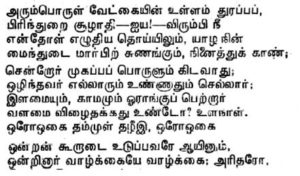
Gist of the message: “Sir, Don’t live with thoughts of living away from your woman for earning fortunes in far-off lands. See the imprints you two have caused to each other while in tight embrace. The fortunes you think you’re going to amass are not going to stay with you. Also know that men who do not go on this type of fortune hunting are not starving either.
“Couples with youth and passion for each other — do they ever care for material things to make them happy? Besides, does wealth have any redeeming quality better than youth and passion for people in love?
“When couples have youth and passion for each other, they would rather live in each other’s embrace, even if they live with scarce resources, with only simple garments to wrap themselves with. Living with each other thus is what happiness is for couples in love.
“With fortunes earned thus, is it ever possible to regain the youth that will be gone when you’re away?â€
We don’t know if the young man stayed home with his beloved. Probably not. After all, most readers of this article did not heed similar advice from their parents, if not from the confidantes of their beloved.
— By Kollengode S VenkataramanÂ
